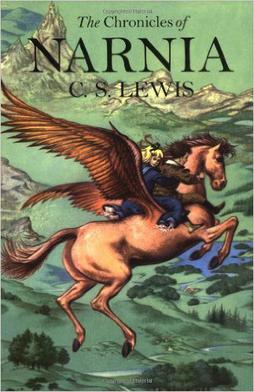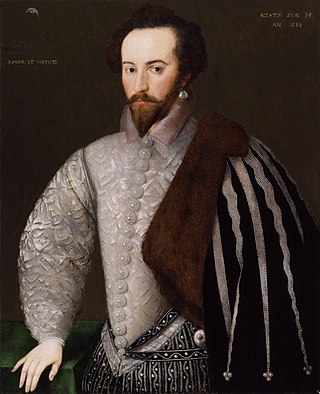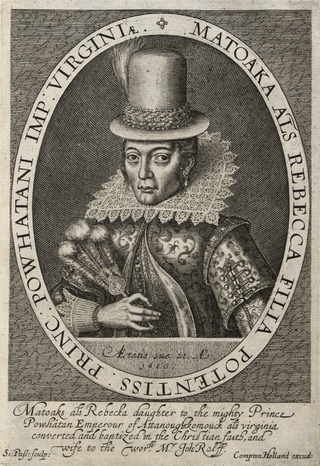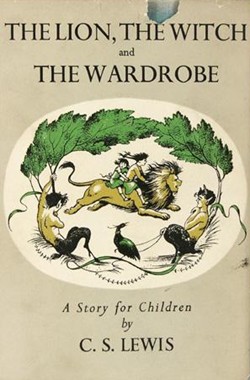
Clive Staples Lewis, was a British writer, literary scholar, and Anglican lay theologian. He held academic positions in English literature at both Oxford University and Cambridge University. He is best known as the author of The Chronicles of Narnia, but he is also noted for his other works of fiction, such as The Screwtape Letters and The Space Trilogy, and for his non-fiction Christian apologetics, including Mere Christianity, Miracles, and The Problem of Pain.

The Chronicles of Narnia is a series of seven portal fantasy novels by British author C. S. Lewis. Illustrated by Pauline Baynes and originally published between 1950 and 1956, The Chronicles of Narnia has been adapted for radio, television, the stage, film and video games. The series is set in the fictional realm of Narnia, a fantasy world of magic, mythical beasts and talking animals. It narrates the adventures of various children who play central roles in the unfolding history of the Narnian world. Except in The Horse and His Boy, the protagonists are all children from the real world who are magically transported to Narnia, where they are sometimes called upon by the lion Aslan to protect Narnia from evil. The books span the entire history of Narnia, from its creation in The Magician's Nephew to its eventual destruction in The Last Battle.

Through the Looking-Glass, and What Alice Found There is a novel published on 27 December 1871 by Lewis Carroll, a mathematics professor at the University of Oxford, and the sequel to Alice's Adventures in Wonderland (1865). Alice again enters a fantastical world, this time by climbing through a mirror into the world that she can see beyond it. There she finds that, just like a reflection, everything is reversed, including logic.

Sir Walter Raleigh was an English statesman, soldier, writer and explorer. One of the most notable figures of the Elizabethan era, he played a leading part in English colonisation of North America, suppressed rebellion in Ireland, helped defend England against the Spanish Armada and held political positions under Elizabeth I.

Catherine Greenaway was an English Victorian artist and writer, known for her children's book illustrations. She received her education in graphic design and art between 1858 and 1871 from the Finsbury School of Art, the South Kensington School of Art, the Heatherley School of Art and the Slade School of Fine Art. She began her career designing for the burgeoning holiday card market, producing Christmas and Valentine's cards. In 1879 wood-block engraver and printer, Edmund Evans, printed Under the Window, an instant best-seller, which established her reputation. Her collaboration with Evans continued throughout the 1880s and 1890s.

Jeanne Antoinette Poisson, Duchesse de Pompadour, commonly known as Madame de Pompadour, was a member of the French court. She was the official chief mistress of King Louis XV from 1745 to 1751, and remained influential as court favourite until her death.

Till We Have Faces: A Myth Retold is a 1956 novel by C. S. Lewis. It is a retelling of Cupid and Psyche, based on its telling in a chapter of The Golden Ass of Apuleius. This story had haunted Lewis all his life, because he realized that some of the main characters' actions were illogical. As a consequence, his retelling of the story is characterized by a highly developed character, the narrator, with the reader being drawn into her reasoning and her emotions. This was his last novel, and he considered it his most mature, written in conjunction with his wife, Joy Davidman.

Pocahontas was a Native American woman belonging to the Powhatan people, notable for her association with the colonial settlement at Jamestown, Virginia. She was the daughter of Powhatan, the paramount chief of a network of tributary tribes in the Tsenacommacah, encompassing the Tidewater region of what is today the U.S. state Virginia.

The Lion, the Witch and the Wardrobe is a portal fantasy novel for children by C. S. Lewis, published by Geoffrey Bles in 1950. It is the first published and best known of seven novels in The Chronicles of Narnia (1950–1956). Among all the author's books, it is also the most widely held in libraries. Although it was originally the first of The Chronicles of Narnia, it is volume two in recent editions that are sequenced by the stories' chronology. Like the other Chronicles, it was illustrated by Pauline Baynes, and her work has been retained in many later editions.
Emma Thomas "Ruth" Pitter, CBE, FRSL was a British poet.

Helen Joy Davidman was an American poet and writer. Often referred to as a child prodigy, she earned a master's degree from Columbia University in English literature at age twenty in 1935. For her book of poems, Letter to a Comrade, she won the Yale Series of Younger Poets Competition in 1938 and the Russell Loines Award for Poetry in 1939. She was the author of several books, including two novels.

Pauline Diana Baynes was an English illustrator, author, and commercial artist. She contributed drawings and paintings to more than 200 books, mostly in the children's genre. She was the first illustrator of some of J. R. R. Tolkien's minor works and of C. S. Lewis's Chronicles of Narnia.

Henrietta Howard was a mistress of King George II of Great Britain and the sister of John Hobart, 1st Earl of Buckinghamshire.
Walter McGehee Hooper was an American writer and literary advisor of the estate of C.S. Lewis. He was a literary trustee for Owen Barfield from December 1997 to October 2006.
Margery Wentworth, also known as Margaret Wentworth, and as both Lady Seymour and Dame Margery Seymour, was the wife of Sir John Seymour and the mother of Queen Jane Seymour, the third wife of King Henry VIII of England. She was the grandmother of King Edward VI of England.
Janet Burroway is an American author. Burroway's published oeuvre includes eight novels, memoirs, short stories, poems, translations, plays, two children's books, and two how-to books about the craft of writing. Her novel The Buzzards was nominated for the 1970 Pulitzer Prize. Raw Silk is her most acclaimed novel thus far. While Burroway's literary fame is due to her novels, the book that has won her the widest readership is Writing Fiction: A Guide to Narrative Craft, first published in 1982. Now in its 10th edition, the book is used as a textbook in writing programs throughout the United States.
This is a list of writings by C. S. Lewis.

The Bridal of Triermain is a narrative poem in three cantos by Walter Scott, published anonymously in 1813. It is written in a flexible metre of four and three stress lines. Set in Cumberland, it recounts the exploits of a knight as he seeks to rescue a beautiful maiden, Gyneth, the illegitimate daughter of King Arthur, doomed by Merlin 500 years previously to an enchanted sleep inside a magic castle.

“Glenfinlas; or, Lord Ronald's Coronach” by Walter Scott, written in 1798 and first published in 1800, was, as Scott remembered it, his first original poem as opposed to translations from the German. A short narrative of 264 lines, it tells a supernatural story based on a Highland legend. Though highly appreciated by many 19th century readers and critics it is now overshadowed by his later and longer poems.
"Reason" is a short poem of sixteen lines by C. S. Lewis, written in about 1925.












